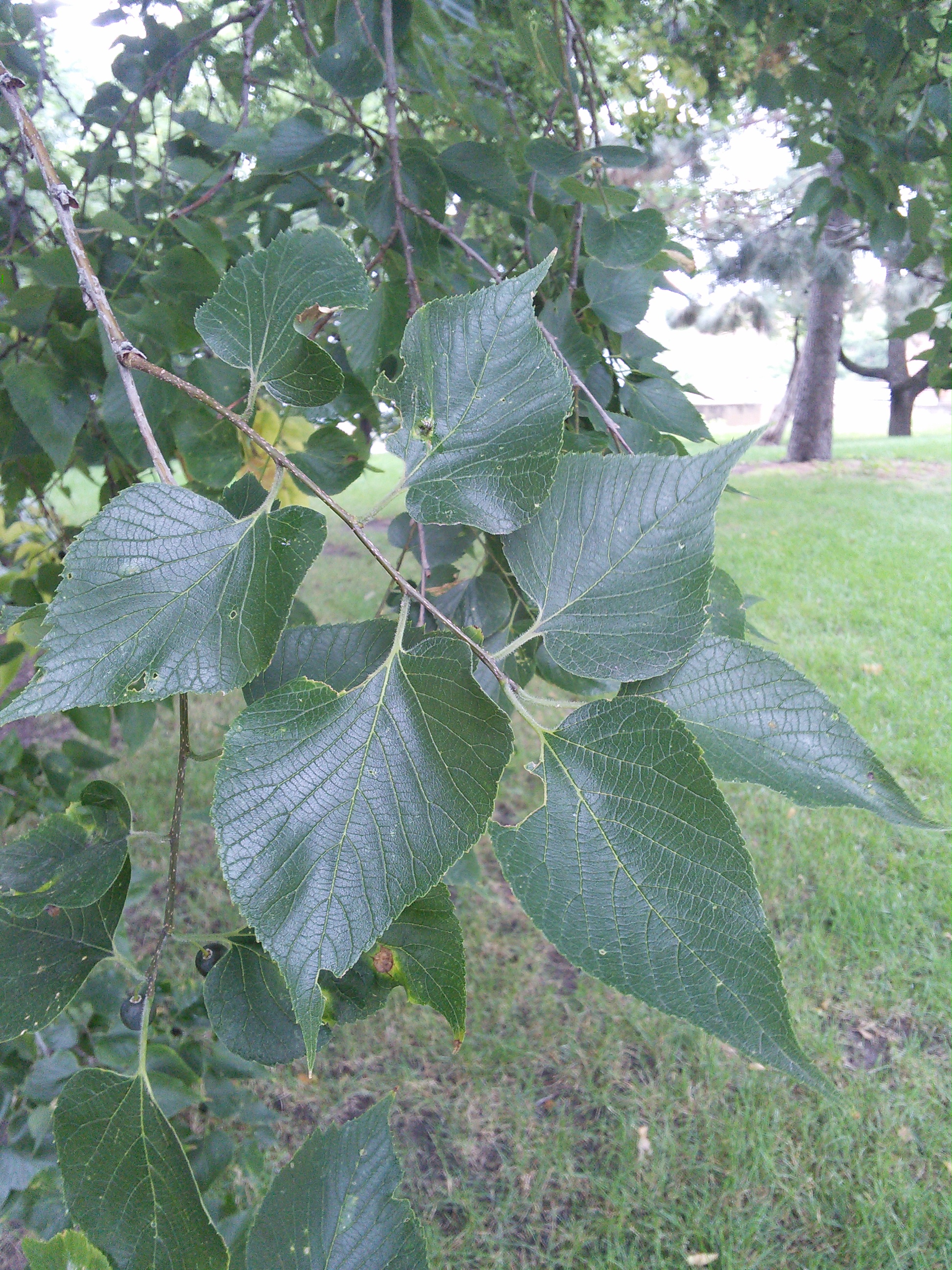Common Name: hackberry
Scientific Name:
Family: Cannabaceae
Genus: Celtis
Species: C. occidentalis
Hardiness Zone: 2 to 9
Height: 40 to 60 ft
Width: 40 to 60 ft
Common characteristics:
When hackberry is grown in the open the crown is generally symmetrical. The bark is a unique grayish brown, covered in narrow corky ridges that are wart-like. Leaves are simple lanced shapes, they grow alternately on the stem. They have an asymmetrically formed base that tapers to points and has sharply serrate margins. The leaves are green in summer turning yellow in the fall. Hackberry has a berry-like drupe, 1/4" to 1/3" in diameter. The drupes have thin, purplish skin with sweet yellowish flesh. They ripen in September and frequently hang on the tree most of the winter.
Where it grows:
The hackberry prefers moist, well-drained alkaline soil and in full sun to partial shade. It will tolerate dry sites that experience occasional drought, wet sites that experience occasional flooding, and clay soils. Hackberry will also tolerate road salts and can be planted near roadways.
How it’s used:
Hackberry trees are widely used in the urban environment. They have a tolerance for most urban conditions and thrive where others will not survive. If properly maintained and pruned from an early age, these trees make fine specimens.
Ecosystem services:
This tree is well used by wildlife songbirds, migrant birds, game birds, and nesting birds utilize this tree for its fruit and cavities. It is also used by game mammals and in the urban setting squirrels and other small mammals.
Where it is native to:
Native to the central and northeastern areas of North America. Locally it is found sparingly in the southern part of Minnesota and in the western part northward through the Red River Valley. It is found naturally in flood plains.
Known Varieties and Their Traits:
Chicagoland Hackberry (Celtis occidentalis 'Chicagoland'): 50 feet high and 40 feet wide; a neat upright-oval habit of growth and a strong central leader, narrower than the species
Magnifica Hackberry (Celtis occidentalis 'Magnifica'): 50 feet high and 40 feet wide; broadly oval to vase-shaped
Prairie Pride Hackberry (Celtis occidentalis 'Prairie Pride'): A uniform, compact oval crown reaching 50 feet high and 40 feet wide; thick leathery foliage, resistant to witches broom
Prairie Sentinel™ Hackberry (Celtis occidentalis 'JFS-KSU1'): A tightly columnar, fastigiate habit; 45 feet high and 12 feet wide
Ultra™ Hackberry (Celtis occidentalis 'Ulzam'): A rounded habit reaching 50 feet wide and 40 feet wide; blue-green foliage
Problems:
It is very tolerant of many pests but powdery mildew, leaf spot, and root rot may occur. Lace bugs and scale bugs can be an issue. Heavy aerial salt can cause witch’s broom and hackberry nipple gall.
References:
